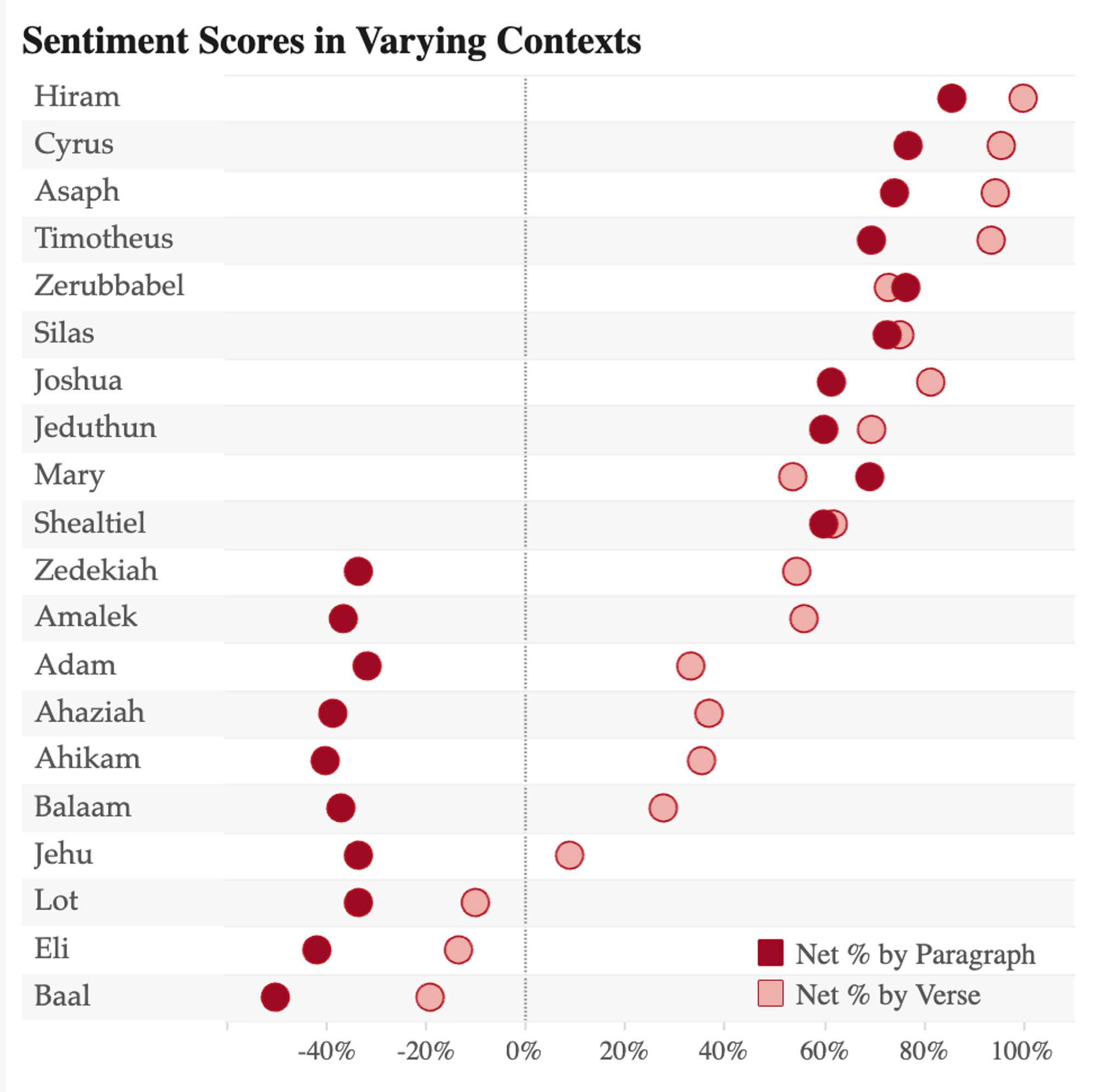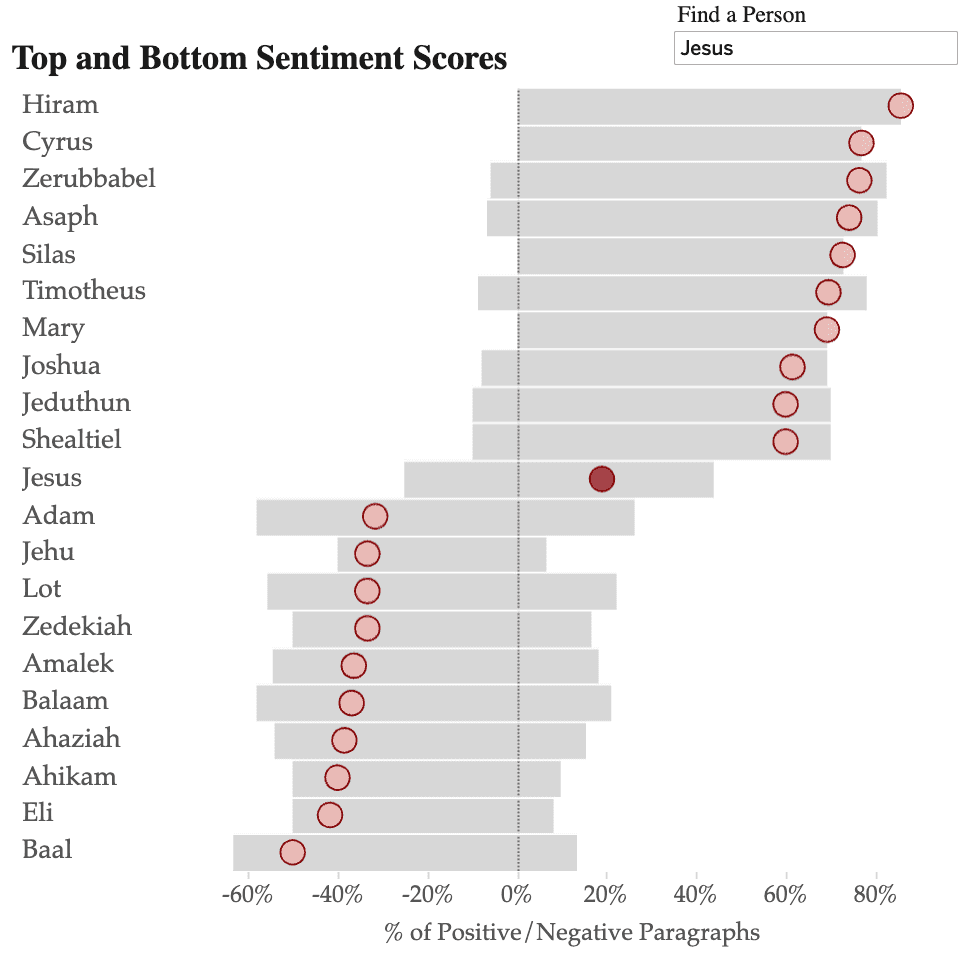Sentiment Analysis of Biblical People
Market researchers routinely use sentiment analysis to gauge overall perceptions of what they’re selling. Data comes in from social media, customer feedback, and other communication channels. The basic process is to look for words with some strong emotional component like: “awesome”, “amazing”, “terrible”, “disappointing”. Those words are assigned a positive or negative score then fed into varying types of statistical models to determine an overall “positive” or “negative” sentiment. Some models identify “neutral” emotion or may assign the type of emotion as “joy”, “anger”, etc. Can this type of linguistic analysis tell us something about Biblical subjects, too?
OpenBible.info applied a sentiment algorithm to the whole Bible and presented the results by visualizing the degree of positive or negative sentiments. This differs from the process I described above in an important way. Marketers are looking to apply sentiments to a thing such as a product, event, or personality. They don’t necessarily care if a stream of tweets are positive if they can’t relate those tweets to their subject matter. The database I’ve built allows us to take the analysis further.
I have applied a sentiment analysis model in R to each paragraph and matched those results to people named within. This ties the text to its subject rather than its book, chapter, and verse. But, are those results something we can trust? The interactive dashboard shows the people that my process identified as the top and bottom according to sentiments in the language surrounding their names. Type a name in the box to find an individual to compare.
It’s important to note that this process is nowhere near absolute or precise. At best, models like this can only give an overall impression or vaguely general comparison from one thing to another. When you see a middle-of-the-road score for Jesus, it doesn’t mean the Bible speaks less highly of Jesus than of some other character. It’s only making a judgment about the words used in association with him. For example, 2 Thessalonians 2:8 says: “And then shall that Wicked be revealed, whom the Lord shall consume with the spirit of his mouth, and shall destroy with the brightness of his coming”. The words “wicked” and “destroy” may be assigned a negative sentiment, “brightness” positive, and others more or less neutral giving the passage a negative sentiment overall.
You’ve heard your pastor and Sunday School teachers say it before: context matters in Bible study. The same is true here. If we compute scores based on the surrounding verse this model will give a different answer than when it includes the entire surrounding paragraph. This dashboard shows how similar or different those results can be given choices made about the contextual scope.

Clearly this method can’t give us any special insight into what God is trying to say. My recommendation for more accurate results is to read it, study it, pray about it, and seek wisdom from other mature Christians. That method has yet to fail me.
